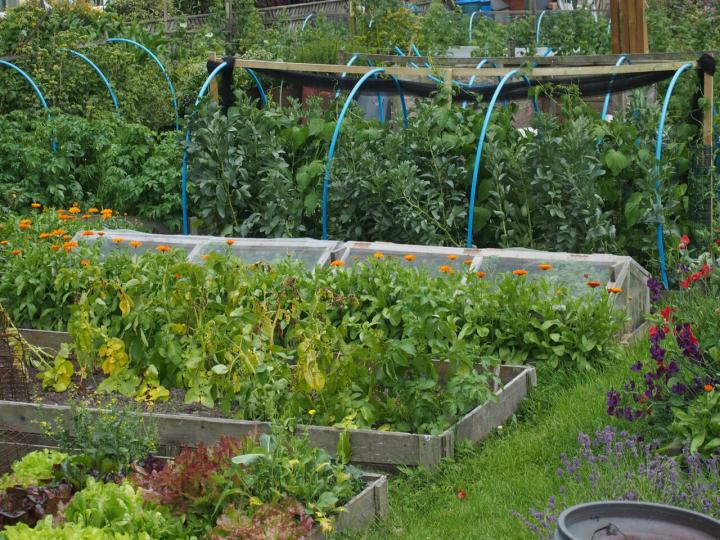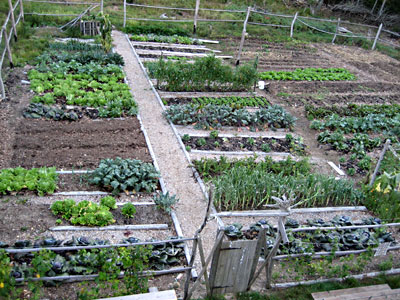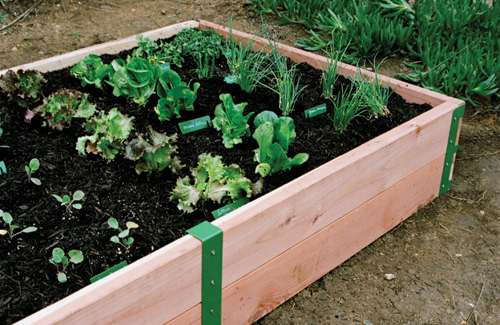Learn Just How to Grow a Flourishing Horticulture Setting for All Skill Levels
Developing a flourishing garden is a complex endeavor that can be accepted by people at any kind of ability degree. By analyzing crucial parts such as dirt wellness, appropriate plant choice, and seasonal care regimens, one can establish a lasting horticulture technique that yields rewarding results. Comprehending just how to analyze and boost your yard room lays the structure for success. The intricacies of executing these principles frequently present difficulties that can prevent also the most passionate amateur. What strategies can be utilized to conquer these challenges and foster a really thriving environment?
Understanding Your Garden Room
In the realm of gardening, understanding your garden space is critical to growing a thriving landscape (Homestead Gardening). The primary step in this venture involves analyzing the particular characteristics of your plot. Factors such as soil make-up, sunlight direct exposure, and drainage play essential functions in establishing the suitability of your yard for various kinds of plants
Begin by conducting a soil examination to evaluate pH degrees and nutrient material, which will certainly inform any type of essential changes. In addition, observe just how much sunlight your room receives throughout the day. Different plants have differing light needs; some flourish in complete sunlight, while others favor full or partial color.

Lastly, evaluate the available room and strategy accordingly. This includes taking into consideration plant elevations and spread to make sure appropriate space for growth without overcrowding. By gaining a thorough understanding of your yard area, you set the foundation for an effective gardening experience.
Selecting the Right Plants
Choosing the right plants for your yard needs cautious consideration of various variables, consisting of environment, dirt problems, and personal choices. Start by analyzing your local environment, as particular plants grow specifically temperature varieties and weather patterns. Tropical plants might not survive in cooler regions, while durable perennials can endure harsh wintertimes.

Consider your personal preferences, including aesthetic appeal and upkeep levels. Make a decision whether you favor dynamic flowers, rich vegetation, or edible plants. Additionally, consider the moment and initiative you are prepared to spend in plant treatment, as some ranges require even more interest than others.
Finally, believe regarding the garden's layout and light exposure. Sunshine patterns throughout the day will certainly affect your selections-- some plants need full sun, while others thrive in shade. By attentively analyzing these elements, you can develop a productive and unified yard tailored to your environment and preferences.
Necessary Gardening Devices
A fully equipped gardener can substantially improve their gardening experience and end results. Vital gardening tools are fundamental to growing a successful garden, regardless of skill degree. A sturdy spade is important for digging and transforming dirt, while a trowel permits for specific planting and transplanting of smaller plants.
Pruning shears are important for keeping plant health by removing dead or overgrown branches, promoting much better air Get More Info flow and growth. Furthermore, a hand rake serves for removing debris and aerating the soil, guaranteeing ideal conditions for plant roots.
Gardening handwear covers shield hands from chemicals, thorns, and blisters, making them a vital accessory. A watering can or hose pipe with an adjustable nozzle ensures that plants obtain ample dampness without overwatering.
Last but not least, think about purchasing a durable wheelbarrow for carrying soil, plants, and devices around the yard efficiently. By putting together a quality toolkit that consists of these crucial things, garden enthusiasts can deal with various jobs with self-confidence and simplicity, paving the means for a prospering gardening environment. Bear in mind, the right devices not only improve efficiency yet likewise enhance the total pleasure of the horticulture procedure.
Soil Preparation and Maintenance
Quality soil is the structure of a successful garden, making correct prep work and upkeep important for healthy plant growth. The initial step in soil preparation involves testing its pH and nutrient degrees. This can be achieved via dirt screening packages offered at horticulture centers or with professional services. Based upon the test results, changes can be made to maximize soil conditions for details plant demands.
Integrating raw material, such as compost or well-rotted manure, is vital for boosting dirt framework and fertility. This not only improves vitamins and mineral availability however likewise advertises beneficial microbial activity. Furthermore, correct water drainage is vital; heavy clay soils may need the addition of sand or perlite to enhance oygenation.
Normal upkeep of dirt health includes mulching, which saves dampness and subdues weeds. Turning crops annually helps prevent nutrient depletion and reduces pest and condition threats. It is likewise crucial to prevent over-tilling, which can disrupt dirt framework and damage useful organisms.
Ultimately, a regular dedication to soil prep work and upkeep will go to my blog certainly cause a growing garden, ensuring that plants receive the essential nutrients they require for durable growth and productivity.
Seasonal Treatment and Administration

In spring, concentrate on growing brand-new seeds and plants, while additionally conducting soil tests to change nutrient shortages. Routinely inspect for diseases and insects, as these can proliferate with the warming weather condition. Summer season needs regular watering and mulching to retain moisture, along with pruning for much better air flow.
As autumn techniques, it's time to prepare the yard for inactivity. This consists of gathering plants, view it now cleansing up particles, and using a layer of compost to secure plant roots from frost. Think about planting cover crops to enhance the soil during the winter months.
Lastly, winter season care is essential. Examine structures like greenhouses for damage and guarantee appropriate insulation for sensitive plants. Routinely keep track of for pests that may look for haven inside your home. By adapting your gardening practices to the seasonal cycles, you can foster a flourishing setting that sustains plant wellness year-round.
Verdict
Finally, growing a successful garden calls for a detailed understanding of vital concepts such as soil make-up, sunlight direct exposure, and ideal plant choice. Implementing reliable soil prep work and maintenance strategies, in addition to using the right devices, promotes an optimal growing environment. Routine seasonal treatment and administration methods better improve plant health and efficiency. By adhering to these fundamental guidelines, individuals in all skill degrees can attain a growing yard that contributes to both aesthetic satisfaction and ecological sustainability.
Picking the right plants for your yard requires careful consideration of different aspects, consisting of environment, dirt problems, and individual choices. Conduct a dirt test to identify pH levels and nutrient material, which will direct you in choosing plants that will grow in your yard.Lastly, consider investing in a sturdy wheelbarrow for transferring soil, plants, and tools around the yard successfully.Quality dirt is the structure of an effective garden, making proper preparation and upkeep critical for healthy and balanced plant development. Homestead Gardening.In verdict, growing a successful garden requires a thorough understanding of crucial concepts such as dirt composition, sunlight exposure, and suitable plant selection